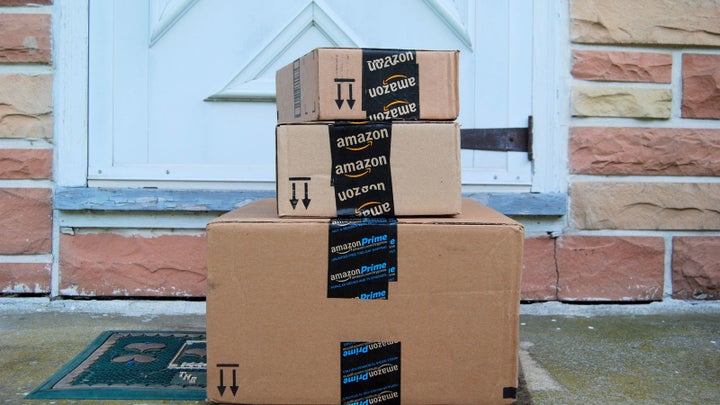
Emily Li Mandri, Senior Strategist, Blue Fountain Media
As Amazon has soared to dominate ecommerce, many retail brands have started to inquire about how they can take advantage of the platform’s features to increase their brand awareness and online sales. There’s no doubt about it, Amazon is a force to be reckoned with, but if brands aren’t informed, prepared to handle the demand, and maintaining close attention their selling strategy, things can spin out of control.
As a brand, if you’re interested in selling on Amazon, here are few things to consider before you push your product listings live:
STOCK UP
Ensure that you have enough product inventory available to ship your Amazon orders, and closely monitor your stock levels as your products begin to sell. As a seller, if you have a product listed that is not in stock, Amazon will penalize your account.
Your products need to be shipped out in a timely manner, and within the timeframe you state on your product listing page. If you’d prefer not to handle fulfillment yourself, to save time or streamline your operations, Amazon does Fulfillment by Amazon (FBA) for a fee. Evaluate this offering against your business needs and budget to determine if FBA is right for you.
REVIEWS RULE
An astounding 84% of consumers trust online reviews as much as personal recommendations. Having reviews for your products adds credibility and helps prospective customers feel more informed about their purchasing decision. A great way to continue to build up your review count is to ask your customers post-purchase for a review.
While the more reviews your product listing has, the better, in an ideal world it’s best to have an average rating of 4 to 5 stars. Be aware that negative reviews will easily tarnish your brand reputation and affect your selling performance. If you do receive negative reviews, time is of the essence. Respond quickly to any negative reviews you receive so you can demonstrate your brand’s commitment to high quality customer service and your products, and make things right with your unhappy customer. Any customer questions should also be handled in a similar fashion, quickly and helpfully, to inch towards that conversion.
CONTENT IS KING
As you begin to build out your product listing pages, be sure to include detailed product information and any attributes that will increase your product’s search visibility. Any keywords that a consumer would type into that search bar to find your product should be integrated into your listing page. Other details such as product dimensions and weight further inform your customer.
The photos you include for your listing should be high quality professional imagery to showcase your product. Consumers are also starting to expect video content, and enjoy the dynamic experience of seeing a product in action. Including a video on your product listing page further enhances the Amazon shopping experience.
THE BUY BOX
The holy grail of Amazon for sellers is getting control of that buy box. Amazon determines which seller to feature based on a proprietary algorithm which evaluates the seller’s price, the fulfillment options available, and the seller rating. Getting featured on the buy box is extremely competitive. In an ideal world, if a seller has a 99% rating, uses FBA, and beats the next lowest price by 2-3%, then they will be featured in the buy box almost 100% of the time. It’s important to focus on your pricing to ensure yours is the lowest available, and as the owner of the brand, your pricing should be.
WHAT PRICE IS RIGHT
Amazon shoppers are extremely price sensitive and are searching for the lowest price for the product they want. As a seller, changing your pricing on a whim and below what you can afford to sell at to get the lowest price listed will impact your bottom line as well as cause a chain reaction with 3rd party sellers. You also need to be aware of the prices 3rd party sellers are listing for your products. If their prices are lower than what you, as the brand, can afford to sell your own product at your established minimum retail price, something’s up.
As a brand, it’s imperative to gain control of your pricing by going after 3rd party sellers, to ensure they are not selling below the minimum advertised price per your brand’s pricing guidelines. Sell inventory only to companies that sign contracts with you to adhere to pricing guidelines. You also need to prohibit resale besides your pre-approved retail outlets. For 3rd-party sellers that are not complying with your established retail pricing, figure out where they are getting inventory from, and tell them to stop. This requires time and effort to play detective, and you may need to get help from your brand’s legal team to help you pursue these vendors. Amazon will not remove 3rd-party sellers or reinforce a price for all sellers. It’s up to sellers to do this.
ADVERTISING OPTIONS
Amazon’s in-house media group (AMG) and marketing services (AMS) pride themselves on their ability to seamlessly integrate advertising throughout the platform in a way that does not seem intrusive or disrupt consumers’ shopping experience. With ad placement options in search results, headline search, and product display, as well as the ability to target customers on Amazon that exhibit similar behavior as your typical brand website consumers, Amazon offers a powerful tool for you to leverage your user behavior data and increase your ROI.
To learn more about developing a cohesive selling strategy for Amazon, visit Blue Fountain Media online.
About the Author
Emily is a Senior Strategist at Blue Fountain Media, where she partners with brands to achieve their business goals via branding, digital marketing, and web development initiatives. With a background in retail and fashion, Emily has her finger on the pulse of ecommerce.
